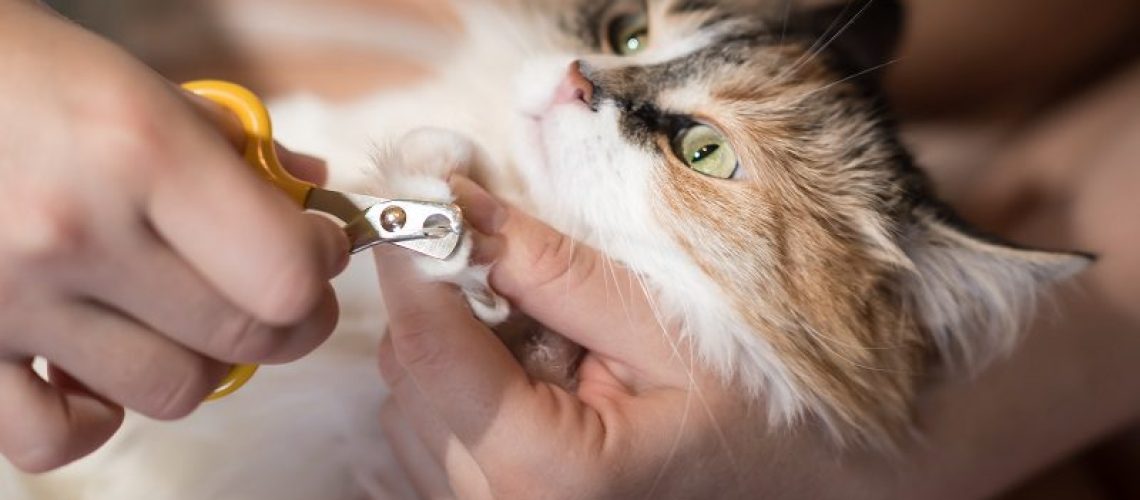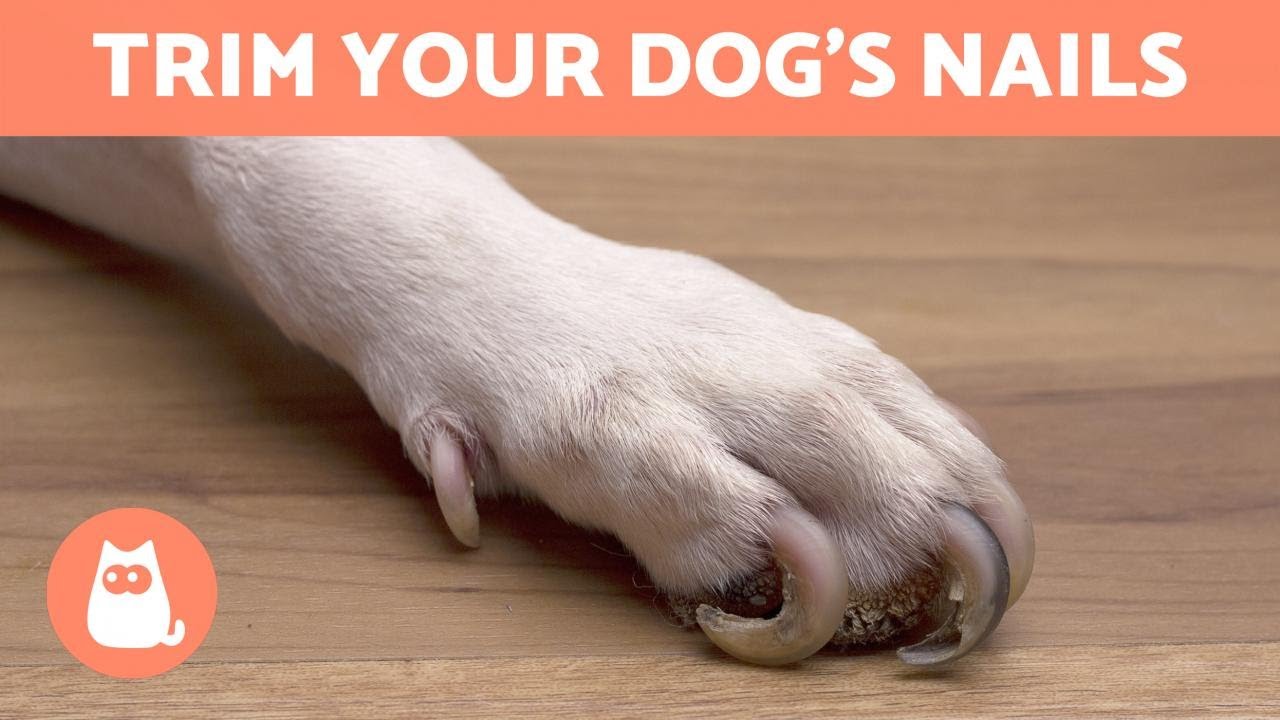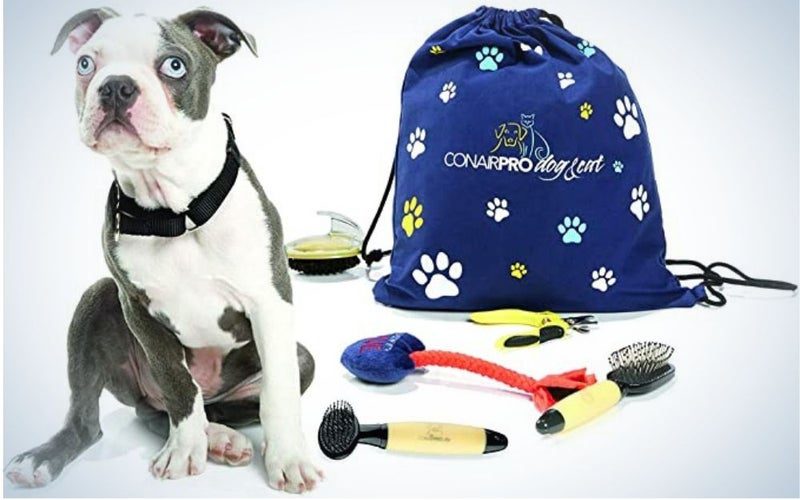Discover the importance of regularly trimming your cat's nails for their health and comfort. Prevent scratches, infections, and promote overall well-being. Learn signs that indicate it's time for a trim.
Key Takeaways:
- Regular nail trimming is important for the health and comfort of your cat.
- Start introducing nail trimming to your cat from a young age to make it easier for them to adjust.
- Invest in proper cat nail trimmers and avoid using human nail clippers.
- Be patient and take breaks if needed during the nail trimming process to avoid stressing out your cat.
- If you're unsure about how to trim your cat's nails, consult with a veterinarian or a professional groomer for guidance.
Why it's important to trim your cat's nails regularly
Regularly trimming your cat's nails is an essential part of their overall grooming routine. It not only helps prevent scratches on furniture and people, but it also promotes the health and well-being of your furry friend. When a cat's nails become too long, they can curl and grow into their paw pads, causing pain and discomfort. By keeping their nails trimmed, you can prevent this from happening.
In addition to preventing painful ingrown nails, regular nail trims also help reduce the risk of infection. When a cat's nails are too long, dirt and bacteria can get trapped under them, leading to infections that can be quite painful for your pet. Trimming their nails regularly helps keep them clean and reduces the chance of infection.
The benefits of regular nail trims for your cat:
- Prevents ingrown nails
- Reduces the risk of infection
- Prevents scratches on furniture and people
- Promotes overall comfort and well-being
My own experience with trimming my cat's nails:
I have been trimming my own cat's nails for years now, and I have seen firsthand the positive impact it has on her health and happiness. Not only does she no longer have issues with ingrown nails or infections, but she also seems more comfortable in general. She no longer gets her claws stuck in fabric or accidentally scratches me during playtime.
I understand that some cats may be resistant to having their nails trimmed at first, but with patience and practice, it becomes easier over time. I highly recommend making nail trimming a regular part of your cat's grooming routine for their overall well-being.
Signs that indicate your cat's nails need trimming
It is important to regularly check your cat's nails for signs that they need trimming. One of the most obvious signs is if you can hear your cat's nails clicking on the floor when they walk. This indicates that their nails have become too long and are in need of a trim. Another sign is if you notice your cat scratching furniture or other surfaces more frequently than usual. This could be a sign that their nails are too sharp and need to be filed down.
Additionally, if you see your cat struggling to retract their claws or if you notice any redness, swelling, or bleeding around the nail bed, it may be an indication that their nails are overgrown and causing discomfort. It is important to address these signs promptly to prevent any further complications.
Tools you need to safely trim your cat's nails
Before attempting to trim your cat's nails, it is essential to gather all the necessary tools to ensure a safe and successful grooming session. The primary tool you will need is a pair of cat nail clippers specifically designed for feline claws. These clippers typically have a curved blade that allows for precise trimming without causing harm.
In addition to nail clippers, it is also recommended to have styptic powder or cornstarch on hand in case you accidentally cut into the quick of your cat's nail and cause bleeding. These powders help stop bleeding by promoting clotting.
List of tools:
- Cat nail clippers
- Styptic powder or cornstarch
- Treats or rewards for positive reinforcement
- A towel or blanket for wrapping your cat (optional)
Preparing your cat before trimming its nails
Trimming tools and supplies
Before you start trimming your cat's nails, it is important to gather all the necessary tools and supplies. These include a pair of cat nail clippers or human nail clippers with a straight edge, styptic powder or cornstarch to stop bleeding in case of accidental cuts, and treats or rewards to keep your cat calm and cooperative during the process.
Create a calm environment
To ensure a successful nail trimming session, it is crucial to create a calm and comfortable environment for your cat. Find a quiet room where you can both relax without distractions. Place a soft towel or blanket on a stable surface like a table or countertop to provide a secure and comfortable space for your cat during the process.
Introduce handling and touch
Before attempting to trim your cat's nails, it is essential to get them accustomed to being handled and touched on their paws. Start by gently touching their paws while offering treats as positive reinforcement. Gradually increase the duration of paw handling sessions over time until your cat feels comfortable having their paws touched.
Familiarize with the sound of clippers
The sound of nail clippers can be intimidating for some cats. To help desensitize them, introduce the sound of clippers gradually. Begin by simply holding the clippers near your cat without actually using them. Offer treats or play with their favorite toy while doing so. This will help associate the sound of clippers with positive experiences, making the actual trimming process less stressful for your feline friend.
Once you have prepared yourself and your cat for the nail trimming session, it's time to move on to holding your cat in the proper way while trimming its nails.

The proper way to hold your cat while trimming its nails
Choose a comfortable position
When it comes to holding your cat during nail trimming, it is important to choose a position that is comfortable for both you and your feline companion. One common method is the "scruff and hold" technique. Gently grasp the loose skin on the back of your cat's neck, known as the scruff, to provide control and stability.
Secure their paws
To prevent any sudden movements or accidental scratches, it is crucial to secure your cat's paws while trimming their nails. Use your non-dominant hand to hold their paw firmly but gently. Press down on the pad of their paw with your thumb to extend the claws for easier access.
Be aware of body language
While holding your cat, pay close attention to their body language. If they start showing signs of distress or discomfort such as growling, hissing, or trying to escape, it may be necessary to take a break and try again later. It is essential to prioritize your cat's comfort and well-being throughout the nail trimming process.
Remember that each cat is unique, and some may require different handling techniques. It is important to adapt these guidelines based on your individual cat's needs and preferences.
Now that you know how to properly hold your cat while trimming its nails let's move on to determining the right length for trimming.
Determining the right length to trim your cat's nails
Understanding feline nail anatomy
Before attempting to trim your cat's nails, it is crucial to understand their anatomy. Cats have retractable claws consisting of a hard outer shell called the sheath and a softer inner core known as the quick. The quick contains blood vessels and nerves, making it sensitive and prone to bleeding if cut.
Trimming the sheath
When trimming your cat's nails, the goal is to only trim the sheath without cutting into the quick. To determine the right length, examine your cat's nails carefully. The sheath should extend slightly beyond the fleshy part of their paw but not reach the point where it curves downwards.
Take breaks and observe
To ensure you are trimming the nails to an appropriate length, it is advisable to take breaks during the process. Trim a small amount of each nail and then observe how your cat reacts. If they show signs of discomfort or bleeding occurs, stop immediately and consult a veterinarian.
Consider professional help if needed
If you are unsure about trimming your cat's nails or if your cat becomes too stressed or uncooperative during the process, it may be best to seek professional help from a veterinarian or a professional groomer. They have experience in handling cats and can ensure that the nails are trimmed safely and accurately.
By understanding how to determine the right length for trimming your cat's nails, you can avoid potential injuries and discomfort for your furry friend. Next, let's explore specific areas on a cat's nail that should be avoided while trimming.
Avoiding specific areas on a cat's nail while trimming
Avoid cutting too close to the quick
One of the most important things to avoid while trimming your cat's nails is cutting too close to the quick. The quick is a sensitive area that contains blood vessels and nerves. Cutting into it can cause pain, bleeding, and potential infection.
Identifying the quick
To avoid cutting into the quick, it is essential to identify its location within your cat's nail. The quick appears as a pinkish area within a translucent nail sheath. However, this may vary depending on the color of your cat's nails. Dark-colored nails make it more challenging to see the quick, so extra caution is necessary.
Trim gradually and in small increments
To minimize the risk of cutting into the quick, it is advisable to trim your cat's nails gradually and in small increments. This allows you to observe the nail's interior as you trim, ensuring that you stop before reaching the sensitive area. By trimming a little at a time, you can avoid accidents and make the process less stressful for your cat.
Use proper lighting and tools
Proper lighting is crucial when attempting to avoid cutting into the quick. Ensure that you have sufficient light to clearly see your cat's nails and identify the pinkish area of the quick. Additionally, using sharp and precise nail clippers designed specifically for cats will help ensure clean cuts without slipping or crushing the nail.
By being cautious and avoiding specific areas on a cat's nail while trimming, you can prevent unnecessary pain or injury. However, accidents can still happen. Let's explore what to do if you accidentally cut into the quick of your cat's nail.
What to do if you accidentally cut into the quick of your cat's nail
Stay calm and reassure your cat
Accidentally cutting into the quick can be distressing for both you and your cat. It is important to stay calm and reassure your feline friend during this situation. Speak softly and gently stroke their back or head to provide comfort.
Apply styptic powder or cornstarch
If bleeding occurs after cutting into the quick, it is essential to act quickly to stop it. Apply styptic powder or cornstarch directly onto the bleeding area using a cotton ball or swab. These substances help promote clotting by constricting blood vessels.
Apply gentle pressure
After applying styptic powder or cornstarch, apply gentle pressure to the bleeding area using a clean cloth or tissue. This helps encourage clotting and stops the bleeding.
Monitor for signs of infection
After addressing the immediate bleeding, it is important to monitor your cat's nail for signs of infection. Watch out for excessive swelling, redness, discharge, or if your cat shows signs of pain or discomfort. If any of these symptoms occur, consult a veterinarian for further evaluation and treatment.
Remember that accidents can happen even with the utmost care. By knowing how to respond if you accidentally cut into the quick of your cat's nail, you can provide prompt and appropriate care. Now let's discuss how often you should trim your cat's nails for their health.
How often to trim your cat's nails for their health
Individual nail growth rate
The frequency at which you should trim your cat's nails depends on their individual nail growth rate. Some cats may naturally wear down their nails through scratching and climbing, requiring less frequent trims. However, others may need more regular trimming to prevent overgrowth and associated issues.
Regular monitoring
To determine when it is time to trim your cat's nails, it is important to regularly monitor their length. Check their nails every 1-2 weeks and look for signs of overgrowth such as curling or snagging on surfaces. Additionally, observe if your cat starts showing discomfort while walking or if they accidentally scratch themselves due to long nails.
Create a trimming schedule
Based on your observations and your cat's individual needs, create a trimming schedule that suits them best. For some cats, monthly trims may be sufficient, while others may require more frequent trims every 2-3 weeks. Adjust the schedule as needed to maintain optimal nail length and prevent any potential issues.
Consider scratching posts and toys
In addition to regular trims, providing your cat with appropriate scratching posts and toys can help naturally wear down their nails. Encourage them to use these designated areas for scratching to promote healthy nail maintenance.
By understanding how often to trim your cat's nails for their health, you can ensure they maintain proper nail length and overall well-being. Regular trims not only prevent discomfort but also reduce the risk of ingrown nails or other complications.
Remember, patience and positive reinforcement are key when trimming your cat's nails. Gradually introduce them to the process, reward them for good behavior, and always prioritize their comfort and safety.
| Trimming Your Cat's Nails | |
| Benefits: | Regular nail trims help prevent painful ingrown nails, reduce scratches on furniture and skin, and promote overall paw health. |
| Tips: | Use proper tools, be patient and gentle, offer rewards, and seek professional help if needed. |
| Remember, with love and care, you can easily keep your cat's nails in tip-top shape! | |
Is it necessary to trim a cat's claws?
Clipping your cat's nails is important, but be careful not to cut into the quick. The quick is the sensitive area inside the claw that contains nerves and blood vessels. Cutting into the quick can cause bleeding and pain for your cat.
What angle do you cut a cat's nails?
Cut the nail at a 45-degree angle using firm and confident pressure. Be careful not to crush the nail by cutting too softly or hesitantly. If your cat has long hair around their paws, make sure to pull it back so you have a clear view of what you're doing.
Does Petsmart clip cat's nails?
Certain locations provide grooming and bathing services for cats, including services like nail trimming, application of nail caps, ear cleaning, and sanitary trimming. We utilize the advanced and exclusive Hydrosurge BathPro 9.0 system.
How do I keep my cats claws dull?
These nail caps made of plastic are available in four different sizes, and applying them is quite easy once you and your cat are familiar with the process. They are available in a natural color but also come in trendy shades. You can buy them from your vet or larger pet supply stores, and they are attached to the nails using glue to make the tips less sharp.
Do cats hurt when their nails are cut?
Animals dislike getting their nails trimmed quickly because it is painful and can cause bleeding. It is also harder to see the quick on dark-colored nails compared to light-colored nails. If your cat has dark nails, it is important to be careful and trim the claws gradually to minimize the risk of hurting the sensitive area.
Is it better to trim cat's nails or leave them?
Regularly trimming your cat's claws every few weeks is vital for keeping your pet healthy. This routine maintenance not only protects you, your family, and your beloved pet, but it also helps to preserve your furniture, such as sofas and curtains.

















